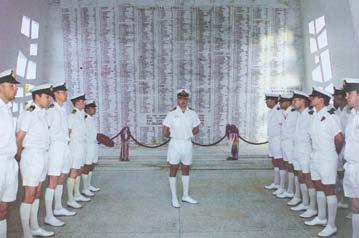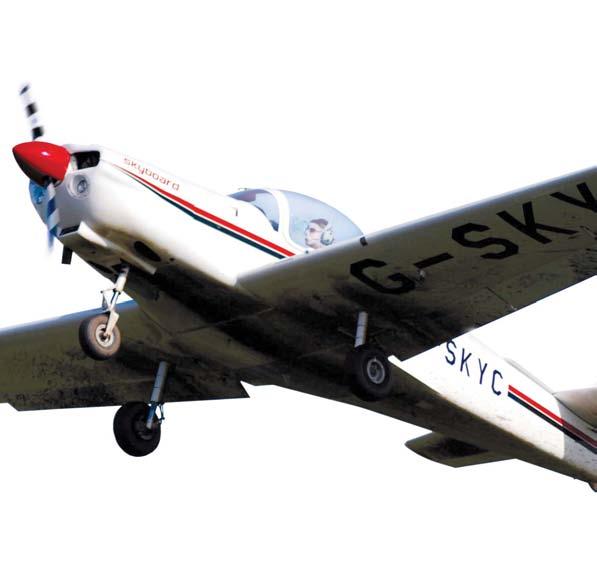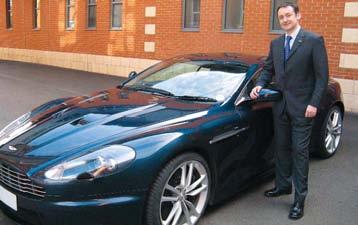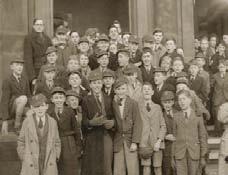
13 minute read
ONA Merchandise
from ONA 76
Cufflinks £10 Enamelled cufflinks (presentation box included) Tie £10 Polyester tie, striped with crest.
To order any of the items, please send a cheque (payable to ONA) to: ONA Office Royal Grammar School Eskdale Terrace Newcastle upon Tyne NE2 4DX
Advertisement
Polo Shirt £18 Canterbury polo shirt with embroidered crest. Wall Plaque £25
100% cotton. Available in black, red or blue. Hooded Sweatshirt £35 Canterbury Hooded Sweatshirt with embroidered crest. 60% cotton 40% polyester.
The new ONA merchandise is now for sale
Available in black, red or blue. contact the ONA office for a price list.
Remember to include your name, address, phone number and/or email, and to indicate which item you are ordering.
Please include phone number and/or email so we can contact you if delivery is likely to The ONA accepts no responsibility for nondelivery via standard post. If you would like your order to be sent by special delivery, please
be delayed.
All goods are sold subject to availability.
The RGS Computer Society: The verybeginning
In issue 75 of the ONA magazine, we printed an article called The RGS Computer Society: Early Days by David Franks (65-72). Unfortunately, we inadvertently attributed the wrong author to the article. The author of the article was, in fact Bob Bramwell (66-71), and NOT David Franks. We would like to apologise to all concerned for the confusion. Below is David Franks’ recollection of the RGS Computer Society:
In 1968 Practical Electronics published the designs for an analogue computer –something that caught the imagination of the RGS Electronics society of which I was an enthusiastic member. By the end of the year we had persuaded the school to buy the parts we needed and had over many lunch hours successfully built RGS’s very first computer. Although it was not particularly pretty and was somewhat limited in what it could do, an article appeared in the Evening Chronicle about our exploits and caught the attention of someone at British Paints where they had just installed the very latest IBM computer –a System 360 Model 25.
British Paints (which soon afterwards became Berger Chemicals) offered the school two hours free computing time per week (5pm to 6pm each Monday and Friday) –an unbelievably generous gift. Terry Ellison and I were the two founding members of what became the Computer Society when we enthusiastically took up the offer. Many others soon followed and the computer operators at British Paints were very patient with our inexperience and our incessant questions –often pointing us to huge banks of IBM manuals when we asked questions about how to do things that they hadn’t yet tried (or when they just wanted to get rid of us for a while). Programming in assembler was a challenge for all of us, but a great grounding in how to manage with very limited memory and disk resources. 4k (4048 bytes) of core memory was not a huge amount to work in –a typical laptop today will have 500,000 times this much memory. If the 4k that Terry and I used to program in was equivalent to the two pints of Watney’s Red Barrel we used to treat ourselves to in celebration of programs that ran first time without errors, then today’s laptop has the equivalent of an Olympic swimming pool of memory.
As we found evermore complex problems that we could program solutions to, we progressed through Fortran and PL/1 to Cobol – the language that businesses still use in some of their legacy systems. The 400 line per minute printer (which had an unhelpful tendency to rock the building) meant that no other processing could be done until the printing had finished. Terry got bored repeatedly waiting for the printer to finish and wrote a program (that he later sold to IBM) which is what we now know as a Print Spooler – a program that enables other processing to be done in the gaps waiting for the printer to be ready for the next bit of data. Our enthusiasm led Terry and I to holiday jobs as computer operators – sometimes working late shifts and running stock update programs where nothing seemed to happen for hours. All programs and data had to be punched onto cards to be fed into the card reader –a process which required dexterity both in the typing and in the feeding. I’ll never forget spilling the entire master file of stock codes (2000 cards or so in total) and having to sort them by hand back into the correct order. I think one of our next projects was an automated sorting program!
David Franks (65-72)
Keith Jewitt (70-77) writes:
I was really delighted to see the article about the early days of the Computer Society. The relationship between the RGS and British Paints was the result of informal contact between the late Frank Budden and my late father Bob Jewitt. Dad met Mr Budden while my elder brother Rob Jewitt (64-70) was at RGS. Mr Budden was a maths teacher and his interest in Data Processing (as it was then called) was largely maths-driven. Dad, by contrast, had come into DP from management accounting and his dream was that computing would one day be an indispensable part of running a business.
Dad’s offer of the British Paints machine was entirely gratuitous, and was founded on the respect he had for the RGS. There was no “funding”, no “risk assessment” and as far as I know no formalities of any sort. Looking back from 2009, it’s difficult to appreciate now how unusual it was at that time for business to cultivate links with formal education. It’s even more difficult to appreciate how esoteric electronic data processing was in the 1960s. Most people in those days had never seen a computer, except on TV during coverage of NASA space shots, and for most of the 1960s the forward-lookers like dad were regarded as cranks. It’s marvellous to hear that his vision is still recognised forty years on.
Obituaries
John Walkinshaw Osselton (36-46)
Died on February 7 2009 in Wales, after a long illness. He was 80.
Sandy, as he was known to his parents and friends entered the School in Sept 1936 in Stoker Meaken’s form J1B.
Rodney Turner (36-46) writes:
“There he met for the first time boys with whom he formed friendships that proved closer and longer lasting than is usual between schoolboys. Largely because of the war and the evacuation to Penrith: living with other families and lacking much contact with local children of our age we met not only every day at School, but relied on each other for company and amusement at all times.”
David Middlebrook (36-47) writes from California:
“After the first day in J1B his personality must have instantly impressed me, because (so I am told) I showed up on his doorstep at 7am the next morning, wanting to be friends! We spent much time together prior to the Penrith departure.
Sandy enjoyed a very large playroom furnished with a Hornby train on its linoleum floor, where I discovered the elements of electricity and electric motors, and lined the track with flashlight bulbs connected with bare copper wire obtained from Boots.” As David went on to become an eminent Professor of Electrical Engineering at Caltech this early influence of Sandy’s is perhaps significant. After the war Sandy built Goodman speakers into the ceiling of that room, long before stereo recording became the norm. There Rodney Turner, Bobby Little, Alwyn Sharples, Ian Ward, John Winterburn and others including the writer gathered to listen to classical music.
Rodney Turner continues:
“Sandy’s time at School was remarkable not only because of his scholastic ability and the breadth of interests but also because of the influence he had on others. I do not think he had any enemies, which in it self is unusual, but he was respected by everyone.” He was active in many aspects of School life: a Prefect, a stalwart of the Debating Society, in the chorus of Murder in the Cathedral, scorer for the First XI in 1945 and in the Science Society where Michael Ryle recalls, as the only member from the Arts Sixth, Sandy gave a lecture on how television worked. This at a time when there was no transmission in this country.
Sandy’s interest in music was wide ranging. He was an accomplished flautist in the First Orchestra, in the Northumbrian Junior Orchestra and in chamber groups. Michael remembers him playing with David Corlett, the Bach Cantata Jesu Joy of Man’s Desiring in the Wordsworth Street Methodist Hall.
Exempt from National Service because of asthma, Sandy initially decided on a medical career but changed and read Electrical Engineering at Kings College. His subsequent career, in Newcastle was in the field of Electroencephalography where he contributed much to its development over very many years, continuing to edit a textbook on the subject long after his retirement and despite the frustration his European colleagues caused him by their failure to submit contributions on time or in intelligible English. In 1978 Sandy came up the idea of a Class Reunion. After considerable research into addresses he organised a Dinner in Newcastle of those who took School Certificate in 1944. It was well attended and another one was held five years later. Five years on wives were included at the Corbridge home of Fiona and Robert Waddell and they have gone on every five years since. Sadly Sandy was too ill to attend the last one held at Donald Gascoigne’s house last year.
He retired to Wales where he had inherited a run down Mill House near Machynlleth. There he and his wife rebuilt the house, cleared the ground and created a superb garden, which was in recent years open to the public every year as part of the National Garden Scheme.
Rodney Turner:
“Sandy was eccentric, a characteristic he must have inherited from his parents. He was unique: I have never known anyone quite like him. He was funny, witty, kind and knew such a lot about so many things. He was always interested in other people, and we respected and admired him. He was a true friend and we loved him for it.”
He married Marian in 1963 and he leaves her, a son Stephen (75-82), and a daughter Rebecca.
Chris Emmerson (36-47)

Patsy Gordon Junior School Teacher (59-85)
My wife Patsy taught at the Junior School for 26 years before retiring in July 1985. She loved her job, indeed loved the whole school. The boys whom she taught had, from the earliest days, nicknamed her “Ma Gordon”and they were constantly in her mind being “ever so well behaved and so enthusiastic”. In her retirement she enjoyed nothing more than to learn of their progress and to recall the various occasions in which they had been implicated. Patsy and Joy Knowles, close friend and colleague throughout all her time at the RGS, together attended the annual Governors’ lunch right up to her final year thus maintaining as close a link as possible with the ever changing scene at the school.
Alan Gordon
Neil Arthur Robinson (46-54) Born 9 May 1935. He died on 7 October 2008, aged 73.
Stuart Armstrong (46-54) writes:
I met Neil when we both entered Form II(I) in September 1946, as “scholarship boys”. He had a distinguished school career, regularly appearing in the prize lists, and was made a prefect in 1952. He became Head Prefect in 1953 – at the time an unusual appointment as he was in neither the First XV nor the First XI. He was tall, quiet, calm and caring, with an innate dignity. To us boys he was known as “Prof” – although I think he was glad to leave that title behind in adult life. His school life was broadly based – he played the bassoon in the orchestras, and sang in the (male voice) choir. He was prominent in the negotiations which led to the formation of the Scottish Country Dance Society – remarkably (for those days) involving girls from the Central High and Church High. A deep knowledge and love of nature was a particular characteristic throughout his life. After reading natural sciences at King’s College, Cambridge, he taught biology for eight years at Lancaster Royal Grammar School, but then made a career change to
Joy Knowles writes:
Patsy Gordon was a colleague and friend of mine for over 25 years and together we witnessed amazing changes at the RGS from the 50s to the 80s. In the early 1970s the glass ceiling for women members of staff was shattered... an event much appreciated by us.
Pat was lively and innovative, dedicated but firm and she genuinely loved teaching. I recall spending many windswept days in the Pinfold where we supervised Junior School football; excursions to local places of interest... “will there be a shop there Miss?”... and memorable trips to London, with a regiment of over 50 nine year old boys in our sole charge! As the years passed, we wrestled with the intricate mechanisms of the Junior School TV and video recorder but never really mastered the technology, to the disbelief and despair of the legendary JHJ (John Jones the Junior School headmaster). One young member of staff subsequently labelled us “the Chalky Talky Sisters.” Pat served under three Senior School headmasters and three Junior School work for the Nature Conservancy (later English Nature). He was initially based at Ainsdale, near Southport, and then worked from the Regional Office at Grange over Sands (later Bowness). He was deeply involved in the work which led to the Government’s acquisition of the Ribble Estuary, and the fight to save Gaitbarrows, near Silverdale, for the nation. He regarded himself as a confirmed bachelor, but that changed when he met Judith, through their shared love of nature. They married in Kendal in 1976, and had three lovely daughters, Astri, Elva, and Iona. He wrote to me to say “I still cannot quite get over having such a happy marriage and three such daughters.” In retirement Neil maintained his study of bees, wasps, and ants, about which he wrote articles and scientific papers. Living in Natland, near Kendal, Neil and Judith produced for several years “Wildlife News”, a beautifully illustrated section of the attractive village website “Natland News”. Neil retained his affection for the School, and attended a Jubilee reunion in 1997. He had planned to attend a 60th reunion in October 2007, but had to accept that his health wasn’t up to it. He suffered from increasing heart problems and, while in hospital for monitoring, had a heart attack from which he did not recover. I salute a fine man and a good friend. headmasters, thus providing a sense of continuity and purpose. After retirement we kept in contact and I last visited her just weeks before the onset of her final illness. She was as optimistic and forward looking as ever. Some months later she telephoned and said “I can no longer communicate.” A sad finale to a life spent relating to others.
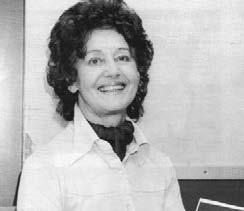
Goodbye, Ma Gordon. May you rest in peace.
Leslie Norman Black (33-36)
Died 15 December 2008, aged 86, after a debilitating illness fought over many years with courage and determination.
An enthusiastic player and follower of rugby throughout his life he joined Old Novos RFC in 1941 enjoying a long association with the club. He was elected President in 1976 and was asked to continue for a second season. During his career in insurance he moved around the UK but was always proud of his geordie roots, association with the school and valued highly the enduring friendships made. His wife Sheila, who died in November 2008, was also brought up in Newcastle, and attended Dame Allan’s School. They enjoyed a marriage of 58 years.
Richard Black
A Whillis (49-59)
Died 23 October 2008, aged 69.
J V S Harrison (41-48)
Died 4 November 2008, aged 78.
W T Jobson (42-47)
Died 6 November 2008, aged 78.
John A Orde (38-47)
Died 27 January 2009, aged 80.
F John Curtis (43-49)
Died 18 January 2009, aged 73.


